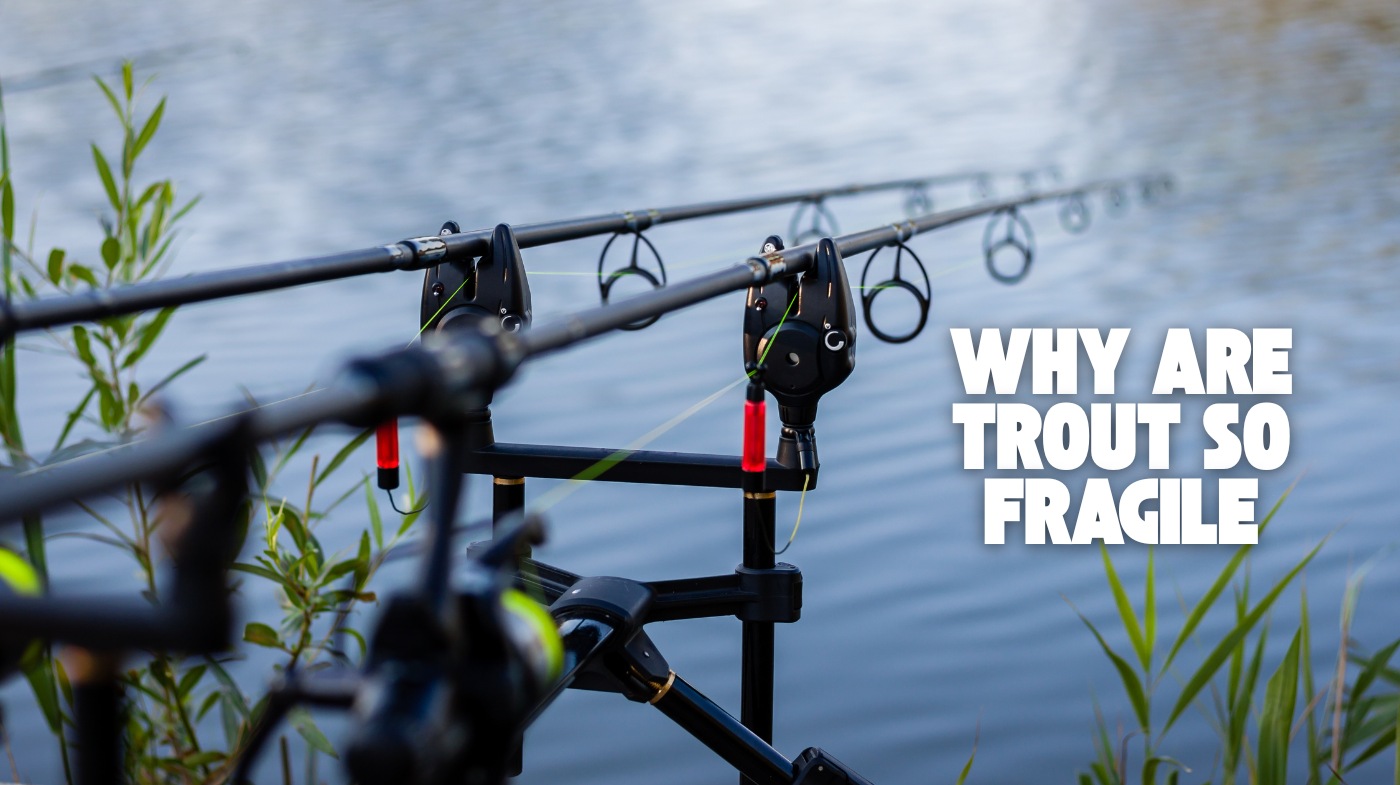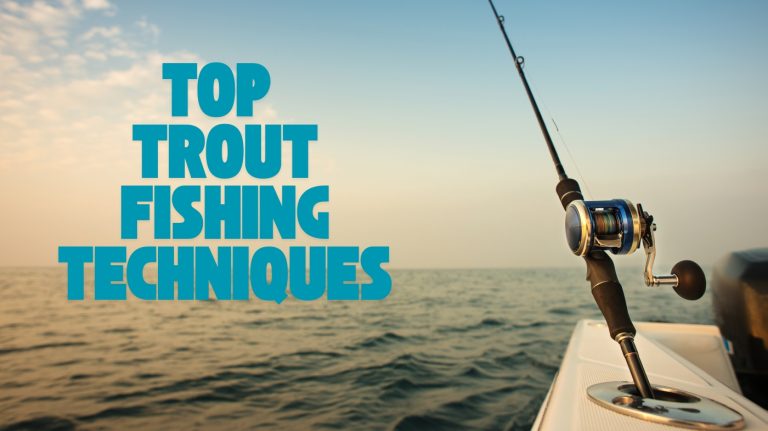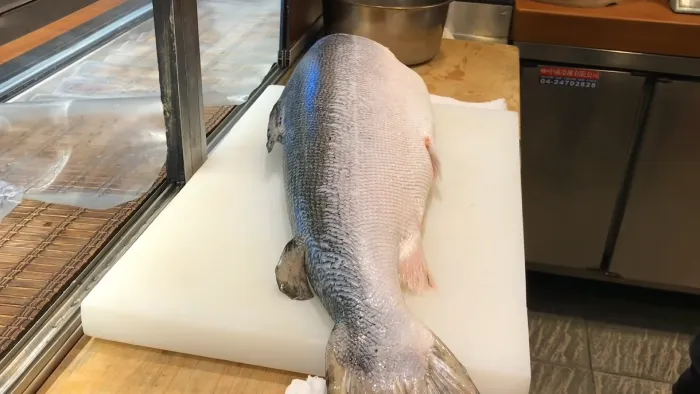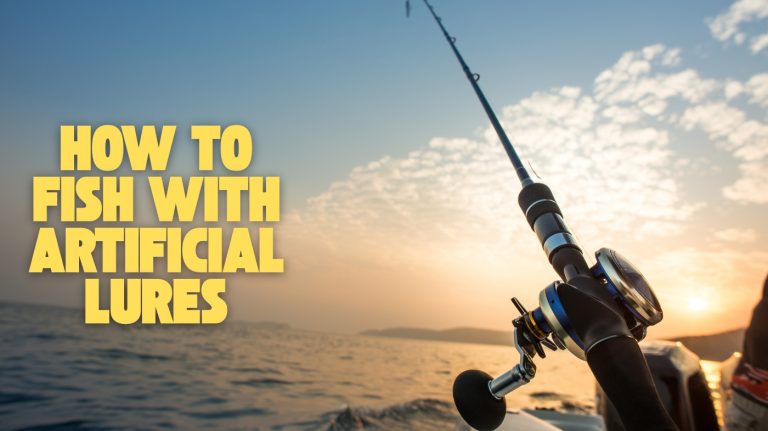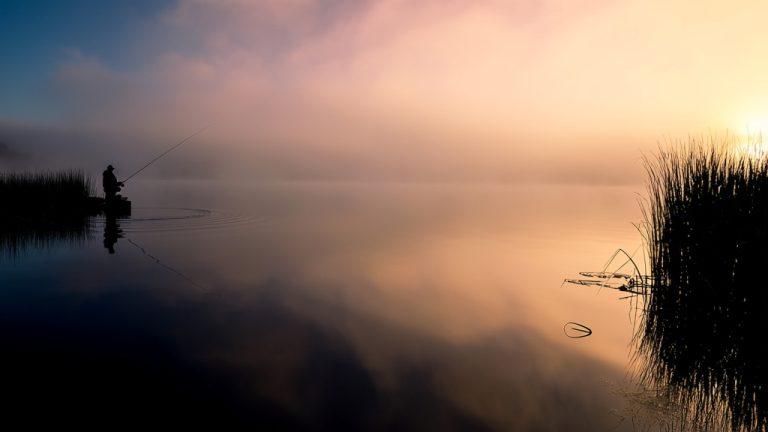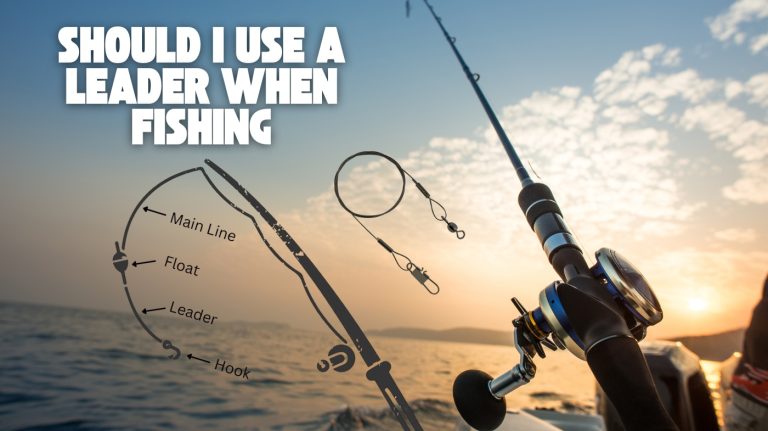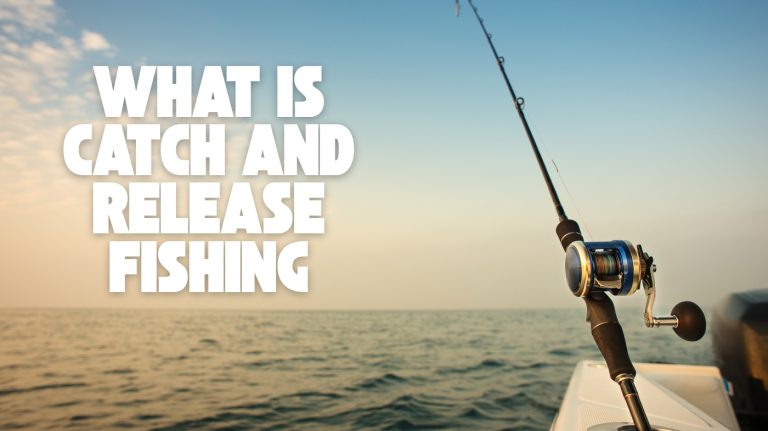Why Are Trout So Fragile? Understand Their Delicate Nature
You’ll find trout fragile because their thin, loosely connected bones and delicate mucous-covered skin make them prone to injury from rough handling or environmental stress.
They require cool, well-oxygenated, and clean water to thrive, so temperature spikes and pollution can quickly overwhelm their physiology.
Handling stress triggers hormonal changes lowering their survival chances.
Understanding trout fragility includes exploring how habitat quality, temperature, water chemistry, and careful angling practices all play vital roles in their health and survival.
Key Takeaways
- Trout have fragile bones and loosely connected skull bones that increase vulnerability to physical damage.
- Their thin fin-supporting bones and curved tail vertebrae reduce skeletal strength and increase injury risk.
- Delicate mucous layers covering skin and scales are easily damaged by handling and abrasion.
- Physiological stress from temperature, pollutants, and handling activates harmful hormonal and enzymatic responses.
- Their skeletal, muscular, and environmental sensitivities limit endurance and make them vulnerable to habitat changes.
Physical Vulnerabilities of Trout
Although trout possess a flexible skeletal structure that aids their swimming, their bones are inherently fragile. Their skeleton consists of numerous vertebrae with x-shaped spines that radiate into muscles, allowing flexibility but offering limited protection.
Trout’s flexible skeleton enhances swimming but their delicate bones provide minimal protection.
The skull’s complex, loosely connected bones enable movement during feeding and breathing but create vulnerability. Fin-supporting appendicular bones are thin and prone to damage.
Additionally, the curved tail vertebrae, an ancestral trait, may weaken tail strength. Muscle tissue, making up 40% of body weight, is primarily white muscle with limited endurance, increasing injury risk.
Trout’s skin and scales provide minimal defense, covered only by a delicate mucous layer easily damaged by handling or abrasion, which heightens infection chances.
These physical traits collectively contribute to trout’s notable fragility in their aquatic environment. Protective gear for anglers, such as scratch-resistant lenses, helps minimize accidental harm to these delicate fish during fishing activities.
Impact of Environmental Conditions
Trout are really sensitive to temperature changes. Even a small increase can lead to thermal stress, which messes with their growth and survival. It’s pretty wild how just a little shift can have such a big impact, right? Their preference for cooler water temperatures makes them especially vulnerable in warming climates.
Then there’s water quality. Factors like dissolved oxygen and sediment levels are crucial for keeping trout healthy. If those levels are off, it can throw their whole physiological balance out of whack. Studies have shown that brook trout habitats vary widely in how air temperature affects water temperature, indicating high variability in thermal conditions.
And don’t forget about habitat degradation! Changes in stream flows and the loss of cold refugia make things even tougher for trout. It’s like they’re facing a triple whammy of environmental pressures.
Temperature Sensitivity Effects
When trout experience warmer stream temperatures before heat events, they can develop higher critical thermal maxima (CTmax), increasing roughly 0.23°C for every 1°C rise in the 30-day average acclimation temperature.
However, this acclimation has limits, and thermal safety margins differ widely by location, sometimes as narrow as 0.5°C. Monitoring water temperature at multiple depths can provide a comprehensive understanding of these variations, helping to predict trout responses more accurately (water temperature monitoring).
You should note these key temperature sensitivity effects:
Trout in urban or agricultural streams face smaller thermal safety margins due to warmer, variable conditions.
Heat stress triggers gene expression changes, including heat-shock protein upregulation.
Physiological tolerance to hypoxia improves with acclimation but fails beyond ~24°C.
Elevated temperatures reduce oxygen solubility and increase metabolic demand, compounding stress.
Temperatures above 16.5°C impair migration, growth, and reproduction. Over half of brook trout habitats have been classified as highly sensitive or vulnerable to warming, highlighting the widespread risk to their survival under changing conditions (habitat vulnerability).
Water Quality Importance
Temperature stresses on trout highlight the importance of water quality factors that directly influence their survival and performance.
You must guarantee dissolved oxygen remains above 6 ppm, as lower levels impair metabolism, reduce feeding, and increase mortality. Since trout are active fish requiring plentiful oxygen, maintaining this minimum oxygen level is critical for their good growth.
Clear water is critical; turbidity limits light penetration, hindering trout’s visual foraging and smothering spawning nests with fine sediments, which compromises egg development. Regularly removing debris and contaminants helps sustain this clarity and prevents organic pollution.
Nutrient concentrations also matter—excess phosphorus and nitrogen trigger algal blooms that cause oxygen fluctuations, stressing trout further.
You should monitor trace metals and pollutants, since toxins like mercury and pesticides disrupt physiological processes and reproduction.
Maintaining low total suspended solids prevents gill damage, while managing biochemical oxygen demand reduces organic pollution. Gentle cleaning methods, such as using a soft-bristled brush with mild detergent, can help maintain equipment and habitats without introducing further stressors.
Habitat Stress Factors
Although trout thrive in cold, stable aquatic environments, various habitat stress factors driven by environmental conditions can severely compromise their survival. You must understand how temperature extremes, flow variability, and habitat degradation impact trout physiology and behavior.
For example:
Water temperatures above 22–28°C induce thermal stress, reducing growth and immunity. Low summer flows isolate pools, trapping trout in warmer water and limiting movement. Altered hydrology disrupts spawning cues, impacting reproduction success. A temperature increase of about 0.3°C per decade has been observed in rivers like the Danube, exacerbating these stresses. Protective features like UV protection found in specialized fishing gear emphasize the importance of shielding aquatic life from harmful radiation, similar to how trout require stable environments.
Loss of riparian vegetation increases water temperature and reduces shelter availability. Fragmented habitats impair genetic exchange, raising extinction risk for isolated populations.
Recognizing these stress factors clarifies why trout populations decline under climate change and habitat disturbance. This emphasizes the need for preserving cold-water refuges and maintaining natural flow regimes.
Effects of Handling and Capture
Because handling and capture impose considerable physiological stress and physical injury on trout, their survival rates after release vary widely depending on specific practices. Understanding the appropriate line management techniques can aid in reducing additional stress during capture.
You should know that hooking location critically affects mortality; mouth-hooked trout survive best, while deep hooking in essential organs like the heart or liver often causes rapid death within 12 hours.
Handling stress accumulates with prolonged air exposure, multiple hookings, and excessive manipulation, increasing mortality risk. Research from Alberta found that prolonged handling times can lead to significantly higher post-release mortality in Bull Trout.
For instance, lake trout caught by set-lining experience up to 32% mortality, contrasting with 9% from jigging. Larger species, such as Bull Trout, suffer disproportionately high mortality due to longer exhaustion and severe injuries.
Minimizing handling time, using barbless hooks, and keeping fish submerged during release substantially improves survival chances after catch-and-release events.
Misconceptions About Trout Fragility
Understanding the causes behind trout mortality after capture helps clarify widespread misconceptions about their fragility.
You might think trout are inherently delicate, but their resilience in natural habitats defies this myth. Their ability to survive brief air exposure, especially under favorable water temperature conditions, underscores their robustness.
Misinterpretations often arise from improper handling and environmental stresses, not trout weakness.
Consider these key points:
Trout survive routine angling if handled properly, showing robustness.
Their behavior varies; downstream holding isn’t fragility but adaptation. In small streams, trout often utilize eddies to position themselves efficiently in the current.
Environmental sensitivities reflect habitat fragility, not trout fragility.
Survival depends heavily on air exposure time, not intrinsic fragility.
Mislabeling trout as fragile can discourage ethical angling practices that protect them.
Biological Stress Factors Affecting Trout
When trout face environmental challenges like handling, low oxygen, or acid exposure, their bodies activate complex biological stress responses involving hormonal, enzymatic, and immune systems. These stress responses can be influenced by fishing techniques, such as those using 5 wt fly rods for delicate presentations.
You’ll notice cortisol spikes as a primary stress indicator, while antioxidant enzymes like glutathione peroxidase increase to combat oxidative damage.
Hypoxia triggers neuroendocrine and immune adjustments, mainly affecting hematopoietic-kidney and skin tissues. Acidic water alters immune enzyme activity, especially in diploid trout.
Additionally, intestinal barrier function weakens post-stress, with gastrointestinal blood flow increasing to support repair. Continuous monitoring has shown that such gastrointestinal hyperemia may indicate repair processes following stress-induced damage.
| Stress Factor | Biological Response |
|---|---|
| Handling | Elevated cortisol, immune enzyme activity |
| Low Oxygen (Hypoxia) | Neuroendocrine, metabolic modulation |
| Acid Exposure | Immune enzyme alterations |
| Gastrointestinal | Barrier impairment, increased blood flow |
Importance of Water Temperature and Quality
Alright, let’s talk about trout and their love for cold water. Did you know that they thrive best in a pretty narrow temperature range? It’s crucial for their metabolic functions.
Even a small change in temperature can mess with the oxygen levels, which might lead to some serious stress for them. Additionally, exposure to UV radiation can impact trout health, making UV protection in their habitats important.
And it’s not just about the temperature. Water quality plays a big role too! When there are pollutants or the water isn’t clear, it can make things even tougher for trout in their environment. Trout often seek shade and deep pools during warmer months to find cooler, oxygen-rich water that helps them survive heat stress.
Cold Water Necessity
Because trout rely heavily on cold, oxygen-rich water, maintaining temperatures between 50°F and 65°F (10-18°C) is essential for their survival and ideal functioning.
You must understand that water temperature directly influences dissolved oxygen levels, which trout need to breathe efficiently. Warmer water reduces oxygen solubility, stressing trout and impairing their metabolism.
Additionally, trout are cold-blooded, so their metabolism and movement depend directly on environmental water temperature. In contrast, some fish like carp become more active in cool water temperatures similar to trout’s preferred range.
When temperatures rise above 68°F (20°C), mortality rates increase considerably. To protect trout populations, consider these critical factors:
- Suitable temperature range supports active feeding and growth.
- Cold water holds more dissolved oxygen crucial for trout respiration.
- Temperatures above 68°F increase stress and disease susceptibility.
- Stable, shaded, spring-fed habitats maintain necessary cold conditions.
- Water quality degradation often coincides with harmful temperature rises.
Impact of Temperature Fluctuations
Although trout thrive within specific temperature ranges, fluctuations in water temperature impose significant physiological stress that challenges their survival.
When exposed to temperatures near their upper tolerance (around 23.4°C for prolonged periods), trout experience reduced aerobic capacity and impaired exercise recovery.
Rapid diurnal swings exacerbate this stress by decreasing their thermal safety margins.
As water warms, metabolic rates rise exponentially, increasing oxygen demand while dissolved oxygen levels drop, causing hypoxic stress.
These combined factors impair feeding efficiency, stunt growth, and delay development, especially in juveniles. Water temperature influences the distribution and abundance of trout species, as seen in how cooler streams favor rainbow trout.
Trout populations adapted to stable thermal regimes fare better, highlighting the importance of consistent temperature.
You must understand that these fluctuations disrupt critical physiological processes, elevating mortality risk and reducing overall fitness, even if temperature peaks remain below lethal thresholds.
Water Quality Effects
When water temperature rises, it directly reduces dissolved oxygen levels, creating a challenging environment for trout survival.
You need to understand that trout require at least 6 ppm dissolved oxygen (DO) for healthy growth. Levels below 5 ppm severely impair juvenile development and spawning success.
Water clarity and nutrient loads also critically impact their habitat. Consider these key points:
Turbidity reduces oxygen penetration in spawning beds and lowers feeding efficiency.
Excess phosphorus triggers algal blooms, causing harmful oxygen depletion at night.
pH outside 6.5–8.0 stresses trout by disrupting enzyme function.
Pollutants, including heavy metals, bioaccumulate and increase toxicity risks.
Stable flow above 10 cfs maintains favorable water quality and sediment balance.
Strategies for Minimizing Trout Stress
To minimize stress on trout during catch and release, focus on reducing handling time and limiting air exposure. Keep air exposure under 15–20 seconds and remove hooks in water using barbless or crimped hooks for swift unhooking.
Always handle trout with wet hands or gloves, supporting them horizontally to avoid mucous damage and scale loss. Wet hands protect the fish’s slime layer, which defends against disease.
Use rubberized, knotless nets to minimize physical trauma. Avoid fishing in water above 65–68°F, as elevated temperatures reduce oxygen availability, increasing stress.
After capture, revive trout by holding them upright in water and gently moving them to oxygenate blood until active.
Release only when the fish shows coordinated swimming, never tossing it back. These precise strategies reduce physiological stress, improving trout survival and preserving their fragile condition.
Role of Conservation in Trout Survival
Minimizing stress during catch and release helps individual trout survive. Sustaining healthy populations requires broader conservation efforts.
Reducing catch-and-release stress aids trout survival, but lasting health depends on comprehensive conservation initiatives.
You need to support habitat restoration projects that increase trout density and reconnect migration corridors. Conservation strategies must prioritize areas based on population and habitat integrity combined with future security assessments.
Coordinated partnerships among agencies and NGOs enhance restoration success and resource management. Continuous monitoring ensures adaptive management for long-term viability.
Key conservation actions include:
- Restoring stream channels and riparian zones critical for brook trout
- Prioritizing subwatersheds with high conservation value
- Protecting intact and secure habitats against climate threats
- Utilizing genetic data to maintain population connectivity
- Implementing large-scale, science-driven conservation plans with measurable goals
Sustainable Angling Practices for Trout Protection
Although trout are prized game fish, practicing sustainable angling is essential to protect their fragile populations.
You should use barbless hooks to reduce tissue damage and increase survival after release.
Wet your hands before handling to preserve the trout’s protective slime coat, and support the fish’s body rather than its gills to avoid internal injuries.
Keep trout submerged during landing and release, minimizing air exposure and physiological stress.
Employ catch-and-release as the primary method, selecting appropriate hook sizes and avoiding fishing during spawning or high temperatures. Rainbow trout prefer cool, oxygen-rich water, so maintaining these conditions is vital for their survival.
Always comply with local regulations, respect closed seasons, and avoid conservation areas.
Engage in habitat restoration and pollution reduction efforts to maintain cold, clean waters.
These precise, careful practices ensure trout populations remain resilient amid environmental challenges.
Frequently Asked Questions
How Do Trout Reproduce and What Affects Their Spawning Success?
You’ll find trout reproduce by spawning in gravel-bottomed streams, where females build redds and release eggs, fertilized by males’ milt.
Spawning success hinges on water temperature (optimal 50-53°F), oxygen levels, clean water, and suitable gravel substrate.
Predation and habitat quality also affect outcomes.
Hatcheries boost survival by controlling fertilization, oxygen flow, and removing dead eggs, greatly enhancing fry survival compared to wild spawning environments.
What Are the Common Predators of Trout in the Wild?
You’ll find trout preyed upon by larger fish like northern pike and bass, especially when they’re under 300 millimeters.
Birds such as herons and ospreys target trout near the surface.
Mammals like otters and bears hunt them in streams and lakes.
Additionally, aquatic insects may consume trout fry.
Human activities, including overfishing and habitat changes, also increase predation pressures, making trout vulnerable across their life stages.
How Does Trout Diet Vary With Habitat and Season?
You know what they say: “Variety is the spice of life.”
Trout diets change with habitat and season. Spring pushes you toward smaller nearshore prey like invertebrates, requiring more activity.
Come summer, you’ll target larger fish, conserving energy.
Different habitats affect prey availability; small tributaries offer more aquatic insects, while mainstem streams provide diverse options.
Seasonal and spatial shifts influence your feeding strategy, growth, and energy allocation, highlighting your adaptive, dynamic nature.
What Role Do Trout Play in Their Aquatic Ecosystems?
You’ll find that trout act as keystone predators, controlling invertebrate populations and maintaining ecosystem balance. They influence nutrient cycling and algal growth by regulating prey species.
Furthermore, trout serve as bioindicators of freshwater health, signaling environmental changes early. Their presence supports biodiversity, shaping aquatic community structure.
How Do Trout Populations Recover After Environmental Disturbances?
You know what they say: “Rome wasn’t built in a day.”
Trout populations recover after disturbances by reconnecting streams to floodplains, restoring riparian vegetation, and removing barriers like dams.
You’ll see improved habitat complexity and cooler water temperatures, which are critical.
Managing invasive species and enforcing catch-and-release rules further aid recovery.
Long-term monitoring and adaptive watershed-scale restoration help guide effective conservation, especially amid climate change challenges.
Protect Trout Fragility Through Smart Angling Practices
You’ve seen that trout’s fragility isn’t just a myth but a complex interplay of physical vulnerabilities, environmental stressors, and handling impacts.
Like a delicate pocket watch from the Victorian era, their survival depends on precise conditions: water temperature, quality, and minimal stress.
By applying sustainable angling and conservation strategies, you can help protect these sensitive fish. This ensures they thrive in their natural habitats despite the challenges they face.

